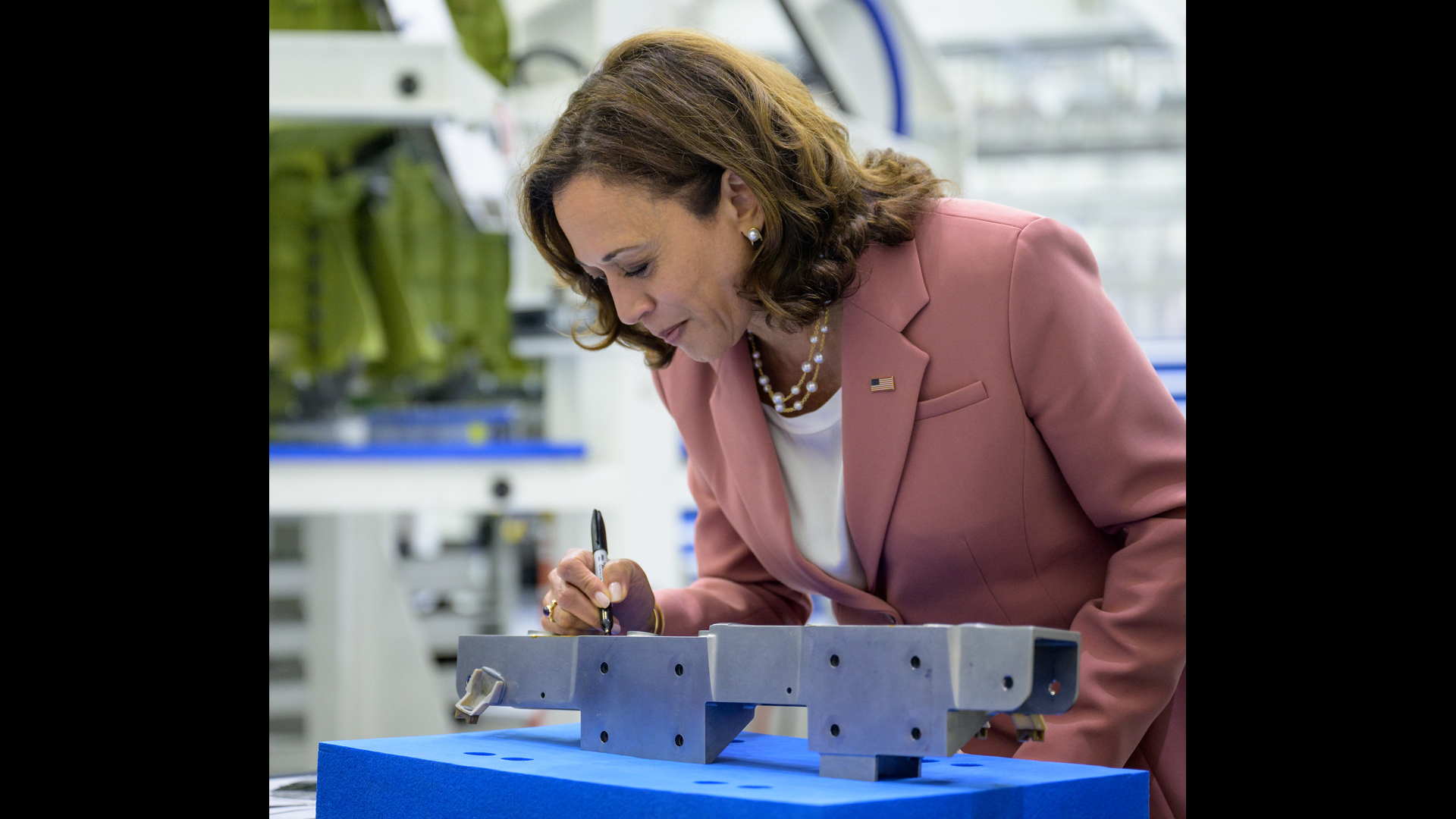CAPE CANAVERAL, Fla. — NASA’s Artemis moon program is the next giant leap for America’s space program, one all Americans should be proud of, Vice President Kamala Harris said this week.
Harris, who chairs the National Space Council, attended NASA’s first attempt to launch the Artemis 1 moon mission from the Kennedy Space Center here on Monday (Aug. 29). And while that launch try was unsuccessful (NASA called it off over an engine cooling issue) it “was a test of pure innovation inspired by the possibilities of what we know can be,” Harris told reporters afterward.
Today (Sept 3), NASA is poised to make its second attempt to launch Artemis 1, an uncrewed test flight of the agency’s new Space Launch System (SLS) megarocket and Orion spacecraft. If successful, the mission will send Orion to the moon and back, paving the way to the sustainable exploration of the moon and beyond, Harris said. Liftoff is scheduled for 2:17 p.m. EDT (1817 GMT) at the start of a two-hour launch window. You can watch the rocket launch live online starting at 12:15 p.m. EDT (1615 GMT).
Related: NASA’s Artemis 1 moon mission: Live updates
More: 10 wild facts about the Artemis 1 moon mission
NASA’s Artemis “is a program that will not only go to the moon, but it’s not going to be a temporary visit,” Harris said after NASA’s first launch attempt on Monday (Aug. 29).
“When the Artemis program launches, this is with the goal of humans being able to live and work on the moon, and with the next step being to travel to Mars.”
The Artemis program aims to land the next humans on the moon by 2025 on NASA’s Artemis 3 mission. The agency hopes to launch an Orion crew around the moon on the Artemis 2 mission in 2024. All of that depends on a successful Artemis 1 launch, mission and landing.
During her visit to the Kennedy Space Center Monday, Harris toured NASA’s Neil Armstrong Operations and Checkout Building where the agency is building its Artemis 2 and Artemis 3 Orion spacecraft for crewed missions to the moon. She also spoke with NASA astronauts and engineers behind the program and signed a bracket that will fly to the moon on the Artemis 3 Orion capsule.
“The technology is extraordinary,” Harris said of the tour. “It’s extraordinary what we’re going to be able to do.
One of NASA’s hallmarks of the Artemis program has been the agency’s goal of landing the first woman on the moon, as well as the first person of color.. That diversity is key for the future of exploration, Harris said.
“So much of space exploration is about science. It’s about research. It’s about testing our ideas of what is possible, and then seeing if it can come true,” Harris said, hailing the commitment of NASA and the U.S. Space Force to diversity. “That diversity of thought that goes into that, the more diverse, the better the outcome will be.”

Harris also weighed in on the costs of the Artemis program, which NASA spent $40 billion on from 2012 to 2020, according to a 2021 report from NASA’s Inspector-General’s office.
“I think that we have to always look at the return on any investment we make,” Harris told reporters, adding the technology and science gleaned from NASA’s Apollo program 50 years ago paved the way for new research, science and medical advancements on Earth.
“And the return on an investment for space exploration and being able to put human beings on the moon where they can work and live — it’s going to be immense,” Harris said.
Editor’s note: Follow our Artemis 1 mission live updates page for the latest on Artemis 1 mission news.
Email Tariq Malik at [email protected] or follow him @tariqjmalik. Follow us @Spacedotcom, Facebook and Instagram.

